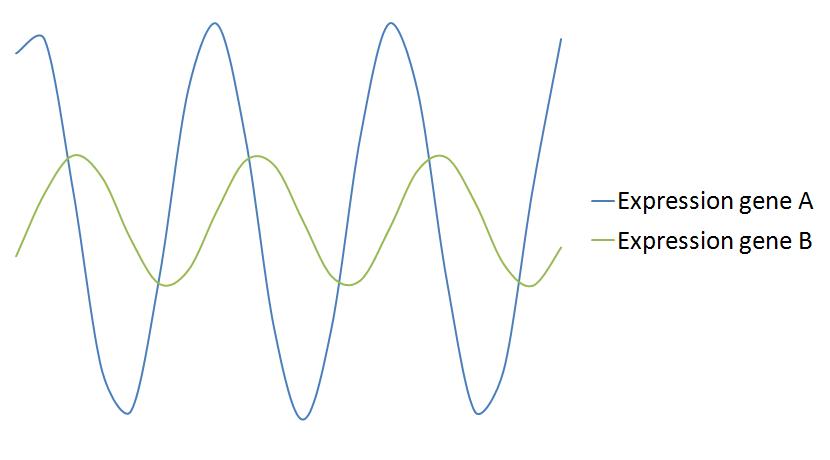Team:Wageningen UR/Project/Applications
From 2011.igem.org
(→Synchroscillator: Possible Applications) |
(→Synchroscillator: Possible Applications) |
||
| Line 30: | Line 30: | ||
As there are some genes that cannot be knocked out, because without it the organism cannot survive, the use of knock-outs is limited. The oscillating system can get the expression level of a crucial gene E very low at certain time points while it makes up for the loss at other time points where it is over-expressed. This means that, by looking at changing expression patterns of other genes over time, it is possible to get interactional information for gene E that until now was very hard to study. | As there are some genes that cannot be knocked out, because without it the organism cannot survive, the use of knock-outs is limited. The oscillating system can get the expression level of a crucial gene E very low at certain time points while it makes up for the loss at other time points where it is over-expressed. This means that, by looking at changing expression patterns of other genes over time, it is possible to get interactional information for gene E that until now was very hard to study. | ||
| + | |||
| + | [[File:Oscillating_AB3.jpg|500px|left]] | ||
| + | '''Fig. 1''' ''A hypothetical graph of the expression levels of gene A & B.'' | ||
Next to that, using the oscillating system, it would be possible to look at rates of interaction between genes. Imagine that gene B is regulated by gene A, which is oscillating. If the interaction speed between A & B would be extremely fast, it might be possible that gene B starts oscillating together with gene A. There should be a delay however. By looking at this delay and the resulting pattern of gene B, conclusions can be drawn about the rate of interaction between both genes. The following figure illustrates what it could look like: | Next to that, using the oscillating system, it would be possible to look at rates of interaction between genes. Imagine that gene B is regulated by gene A, which is oscillating. If the interaction speed between A & B would be extremely fast, it might be possible that gene B starts oscillating together with gene A. There should be a delay however. By looking at this delay and the resulting pattern of gene B, conclusions can be drawn about the rate of interaction between both genes. The following figure illustrates what it could look like: | ||
| - | |||
| - | |||
| - | |||
| - | |||
| - | |||
The oscillatory system could also be used in industrial applications. One hypothetical application involves ranging enzyme concentrations. If for example a particular protein is manufactured by carrying out two different reactions in separate tanks by using an organism with an over-expressed enzyme A in tank 1 and another strain with over-expressed enzyme B in tank 2, the same follow-up of reactions can be carried out in 1 tank using two oscillating systems. | The oscillatory system could also be used in industrial applications. One hypothetical application involves ranging enzyme concentrations. If for example a particular protein is manufactured by carrying out two different reactions in separate tanks by using an organism with an over-expressed enzyme A in tank 1 and another strain with over-expressed enzyme B in tank 2, the same follow-up of reactions can be carried out in 1 tank using two oscillating systems. | ||
Revision as of 02:22, 22 September 2011
 "
"



